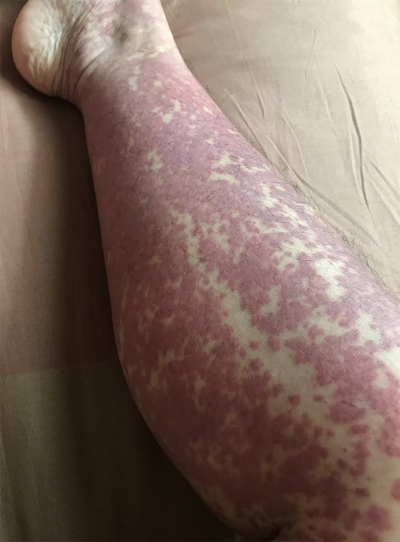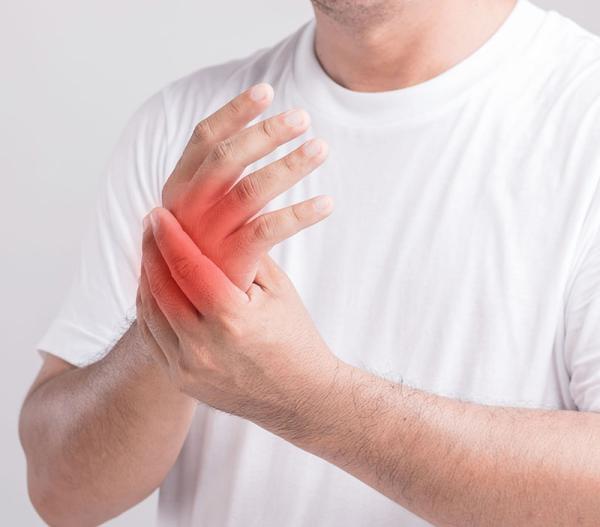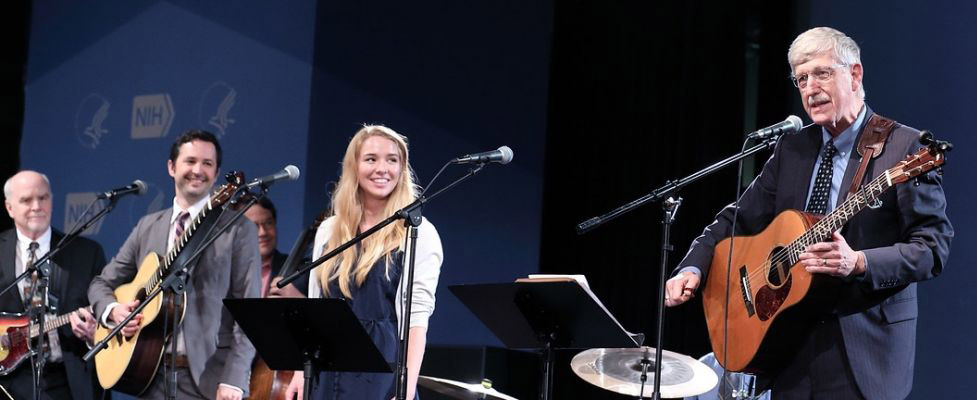IRP’s John O’Shea Elected to National Academy of Sciences
NIH Scientist Spurred Revolution in Autoimmune Disease Therapy

IRP senior investigator John O’Shea was elected to the National Academy of Sciences in May in recognition of his contributions to our understanding of the immune system, which have led to a new class of treatments for autoimmune diseases.
IRP senior investigator John O’Shea, M.D., is a man of many talents. During his career at NIH, he has applied his creativity and drive not just to playing a variety of instruments in a rock band made up of NIH scientists, the Affordable Rock ‘n’ Roll Act (ARRA), but also to his groundbreaking research on the immune system.
This May, Dr. O’Shea, who is the Scientific Director at the National Institute of Arthritis and Musculoskeletal and Skin Diseases (NIAMS), was elected to the National Academy of Sciences (NAS) for his influential research on the biochemical chain of events that kicks our immune system into gear, which has led to a better understanding of how genetic mutations interfere with the immune response, as well as the development of an entire new class of drugs that target the immune system.
“As an undergrad, I went to a Cezanne retrospective, who returned to painting Mont Sainte-Victoire over and over again — I was so fascinated by that approach,” Dr. O’Shea says. “Remarkably, that’s how I see my own scientific career now. I started asking a question in the 1980s and 1990s and then kept returning to similar scientific questions over and over.”
The problem that first captured Dr. O’Shea’s imagination was how to help a patient with a rare condition called vasculitis, an ‘autoimmune’ disease in which the immune system attacks blood vessels and causes inflammation that can restrict blood flow to cells. The disease exemplifies the many ways that immune cells, while critical to protecting our health, can rebel against the body.
“It was a very mysterious disease at the time and people were struggling to understand how to treat it,” Dr. O’Shea recalls. “It turned out the one expert in the world was this guy Tony Fauci, so I contacted the NIH. They gave me advice on treating the patient and that convinced me that NIH was the place where people were figuring out how to treat autoimmune diseases much more effectively.”

The most visible symptom of some forms of vasculitis is a raised rash caused by bleeding underneath the skin.
Dr. O’Shea’s first impression turned out to be true. He joined NIH in 1981 for postdoctoral training in immunology before starting his own IRP lab in 1989. As fortune would have it, his own work coincided with the discovery of two brand new players in the signaling pathways that guide the immune response. These two new families of proteins were called, respectively, the Janus kinases (JAKs) and signal transducers and activators of transcription (STATs). Dr. O’Shea and his colleagues discovered and cloned JAK3, which is essential for inducing the cascade of effects caused by immune system molecules called cytokines, including one known as interleukin-2 (IL-2).
Around the same time, Dr. O’Shea’s colleague, IRP senior investigator Warren Leonard, M.D., made an important discovery about another molecule involved in the immune response. Dr. Leonard had already identified the subunits that make up the cellular receptor that IL-2 binds to, and in 1993, his team revealed that mutations in a gene that produces one of those IL-2 receptor subunits, IL2RG, could cause a condition called X-linked severe combined immunodeficiency (X-SCID), colloquially known as “Bubble Boy” syndrome. That disease leaves patients with immune systems so toothless that they sometimes have to be completely isolated from the outside world in order to avoid catching any kind of infectious illness.
On the heels of their complementary discoveries in the early 1990s, Dr. O’Shea and Dr. Leonard teamed up to demonstrate how JAK3 interacts with that IL-2 receptor subunit. This eventually led to the discovery that mutations in JAK3 could also cause X-SCID by preventing IL-2 and related cytokines from working properly.
“With the identification of these mutations, we now had a tool for improving diagnosis and treatment of patients,” Dr. O’Shea says, “but it also suggested to us that targeting JAK3 might represent a new class of drugs for treating more common diseases, and then that turned out to be true as well.”

Dr. O’Shea’s discoveries about JAK3 led to a new type of drug called JAK inhibitors, which are now used to treat diseases like the joint-destroying disease rheumatoid arthritis and other inflammation-inducing conditions.
To turn his discoveries into new therapies, Dr. O’Shea partnered with a pharmaceutical company through an NIH Cooperative Research and Development Agreement (CRADA), which allowed them to utilize the company’s resources to further study the possibility that manipulating JAK3 could help patients with autoimmune diseases. This led to the eventual development of a new treatment for rheumatoid arthritis. Today, there is an entire class of JAK inhibitors, colloquially called “jakinibs.”
“Twenty or so years later, we now have more than 11 approved inhibitors in this family for multiple forms of arthritis, inflammatory bowel disease, dermatologic disorders, and COVID-19,” Dr. O’Shea says. “There is even a jakinib approved for treating dogs with severe dermatitis!”
Like the painter Cezanne, Dr. O’Shea continues to revisit the same scientific problem today that he began working on all those years ago, repeatedly approaching the study of cytokine signaling from different angles. This endeavor has benefited immensely both from the contributions of senior scientists in other IRP labs and from the fresh perspectives of the young trainees in his lab, whom Dr. O’Shea encourages to pursue their own unique approaches to learning about the immune system. In fact, Dr. O’Shea believes that creativity is just as important in his lab as it is in his rock band.
"The band is really a metaphor for what happens at the NIH,” Dr. O’Shea says. “You see people coming with loads of energy, optimism, dedication, and unbelievable talent. And we say, ‘here's how we can help you execute your ideas so they eventually benefit patients.’”

Dr. O’Shea (far left) performs with his band, the Affordable Rock ‘n’ Roll Act, which also includes former NIH Director Francis Collins (far right).
Even more than his recent election to the NAS and the many other awards he has garnered since joining the IRP, the opportunity to be part of that NIH community is the real honor in Dr. O’Shea’s mind.
“I get to do work I really love doing,” he says “and, go figure, it helps people.”
Subscribe to our weekly newsletter to stay up-to-date on the latest breakthroughs in the NIH Intramural Research Program.
Related Blog Posts
- Sandra Wolin and Ronald Germain Elected to American Academy of Arts and Sciences
- IRP’s Luigi Notarangelo Elected to National Academy of Medicine
- IRP’s Michael Lenardo Elected to National Academy of Sciences
- IRP’s Lindsey Criswell Elected to National Academy of Medicine
- Unlocking the Genetic Mysteries of Rare Autoinflammatory Diseases
This page was last updated on Wednesday, July 26, 2023
